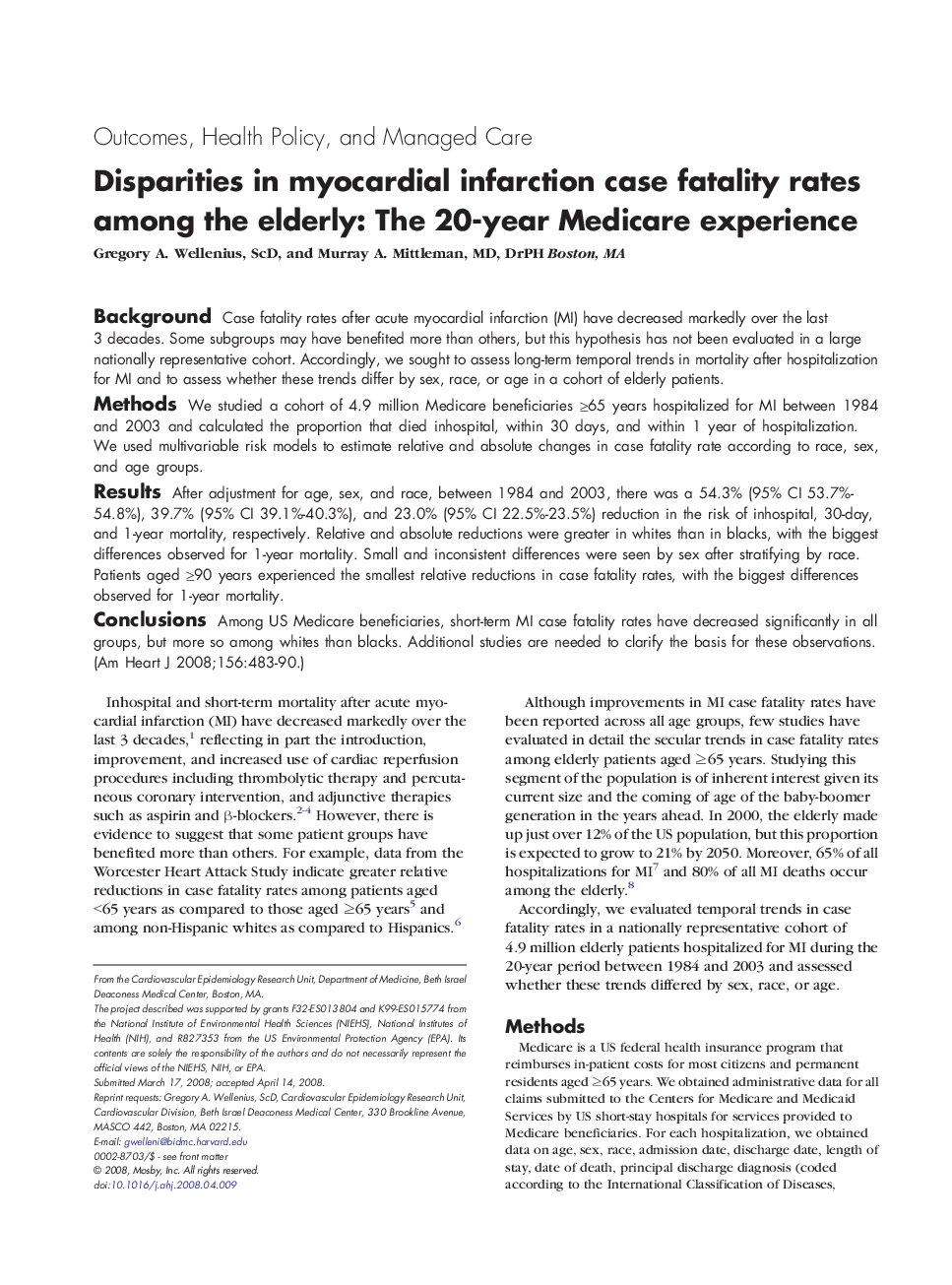| Article ID | Journal | Published Year | Pages | File Type |
|---|---|---|---|---|
| 2849862 | American Heart Journal | 2008 | 8 Pages |
BackgroundCase fatality rates after acute myocardial infarction (MI) have decreased markedly over the last 3 decades. Some subgroups may have benefited more than others, but this hypothesis has not been evaluated in a large nationally representative cohort. Accordingly, we sought to assess long-term temporal trends in mortality after hospitalization for MI and to assess whether these trends differ by sex, race, or age in a cohort of elderly patients.MethodsWe studied a cohort of 4.9 million Medicare beneficiaries ≥65 years hospitalized for MI between 1984 and 2003 and calculated the proportion that died inhospital, within 30 days, and within 1 year of hospitalization. We used multivariable risk models to estimate relative and absolute changes in case fatality rate according to race, sex, and age groups.ResultsAfter adjustment for age, sex, and race, between 1984 and 2003, there was a 54.3% (95% CI 53.7%-54.8%), 39.7% (95% CI 39.1%-40.3%), and 23.0% (95% CI 22.5%-23.5%) reduction in the risk of inhospital, 30-day, and 1-year mortality, respectively. Relative and absolute reductions were greater in whites than in blacks, with the biggest differences observed for 1-year mortality. Small and inconsistent differences were seen by sex after stratifying by race. Patients aged ≥90 years experienced the smallest relative reductions in case fatality rates, with the biggest differences observed for 1-year mortality.ConclusionsAmong US Medicare beneficiaries, short-term MI case fatality rates have decreased significantly in all groups, but more so among whites than blacks. Additional studies are needed to clarify the basis for these observations.
